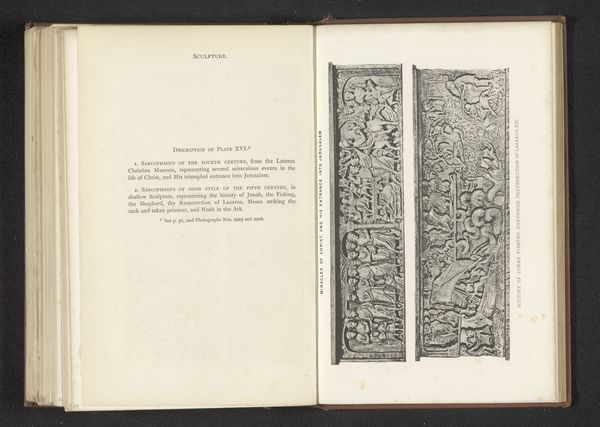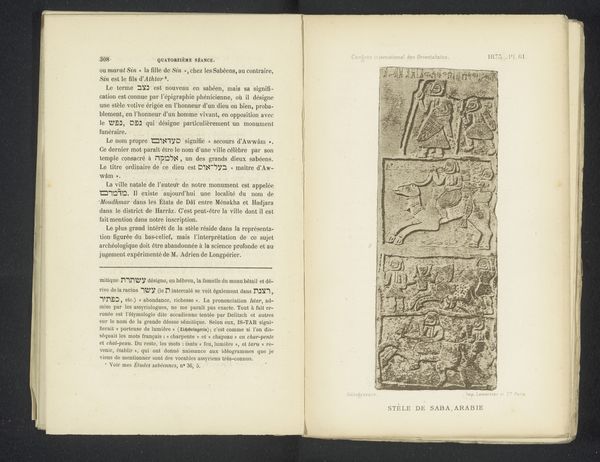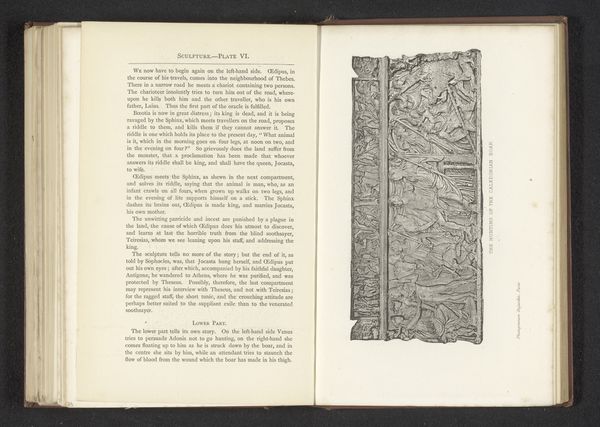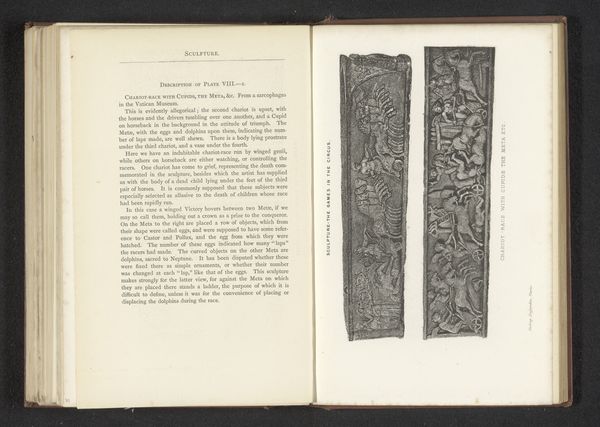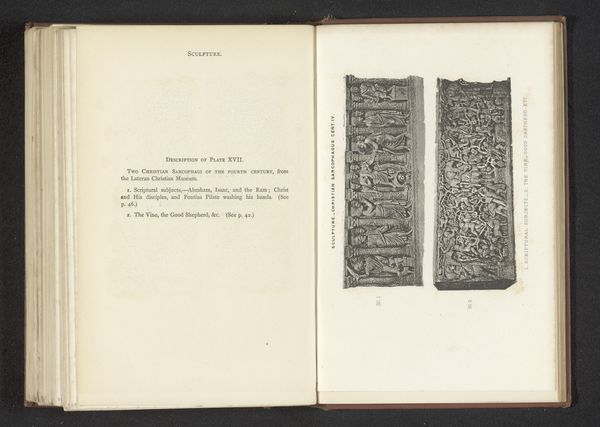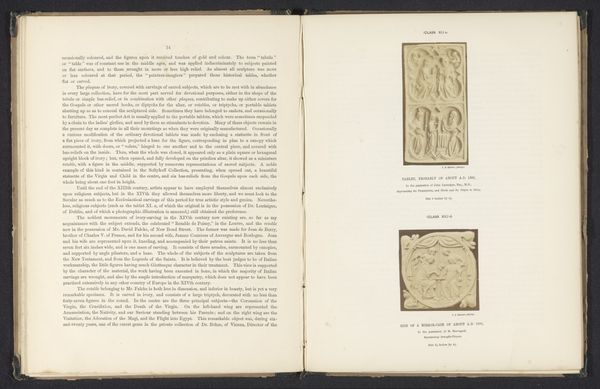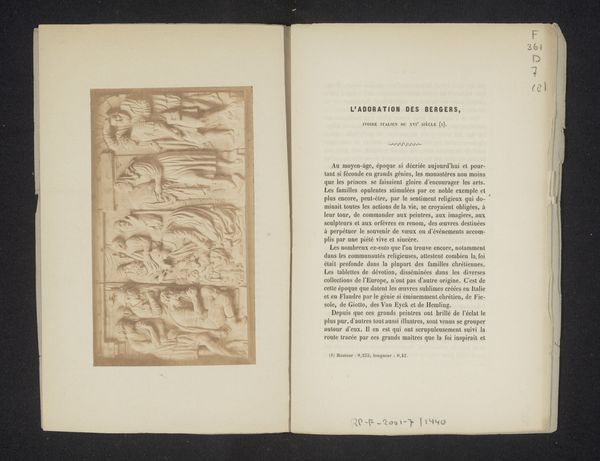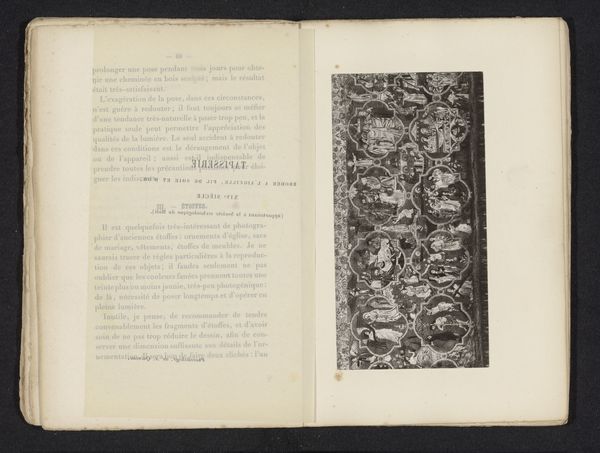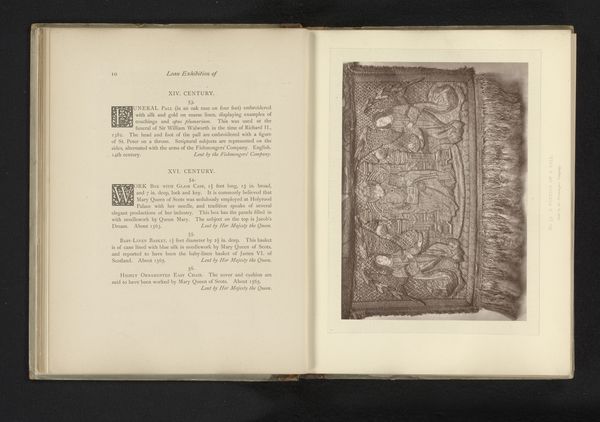
Twee reliëfs van sarcofagen, voorstellend Adam en Eva en het lijden van Christus before 1877
0:00
0:00
carving, relief, sculpture, marble
#
medieval
#
carving
#
narrative-art
#
relief
#
figuration
#
geometric
#
sculpture
#
islamic-art
#
history-painting
#
marble
Dimensions: height 140 mm, width 223 mm
Copyright: Rijks Museum: Open Domain
Curator: Let's discuss these fascinating reliefs of sarcophagi. This work, dating back to before 1877, showcases two distinct panels. One depicts Adam and Eve alongside biblical narratives, while the other focuses on scenes related to the Passion of Christ. Editor: Immediately striking! The composition seems quite dense, packed with figures and geometric motifs. The depth of the carving must be really substantial. What are the origins of these marble panels? Curator: The description indicates these are depictions of fourth century sarcophagi originating from the Lateran Christian Museum. They portray selections from the Old and New Testaments. Looking at these images, one has to think about how power dynamics intersect with visual representation. Note how narratives of creation, obedience, and sacrifice were leveraged by the Church. Editor: Yes, but consider how each figure, however small, is so deliberately placed, how they create patterns of light and shadow... The formal arrangement amplifies the importance of key events and perhaps the visual rhythm also mimics the liturgical recitations typical in the period? Curator: Interesting. But, while the visual patterns undeniably contribute to the work's impact, shouldn't we also contemplate who commissioned these pieces and what socio-political messages they were meant to convey? The Church was in its ascendance at this time; sarcophagi are, fundamentally, class-based commissions reflecting a hierarchy in power, no? Editor: It's fascinating how you situate the work in its socio-political context! I'm drawn, instead, to the textures—how the artist rendered flesh versus fabric— and how these surfaces catch light. These are formal decisions shaping the reading as well. Curator: True, but ignoring the artwork's intersection with religious institutions would be to disregard its deeply interwoven layers of significance and influence, wouldn't you say? Editor: Well, on the other hand, one cannot analyze any piece of artwork in isolation from its intrinsic material elements either. In this way, the composition is a cultural and symbolic expression! Curator: Well, reflecting on this pairing, I'm reminded of how important it is to analyze the full context of religious artworks when interpreting social frameworks. Editor: Indeed, appreciating the marble medium of these reliefs deepens my grasp of their artistic execution.
Comments
No comments
Be the first to comment and join the conversation on the ultimate creative platform.
